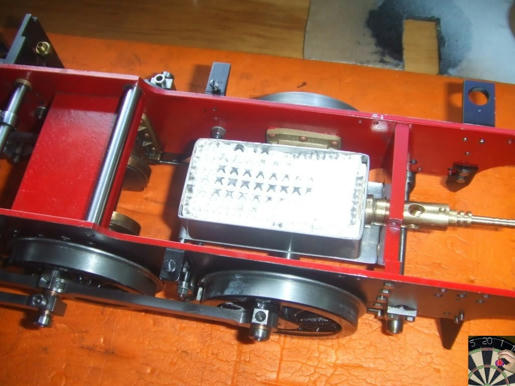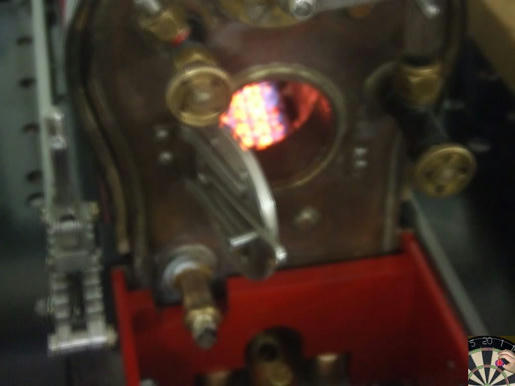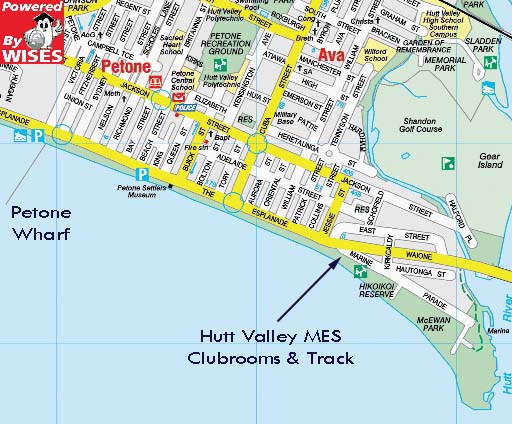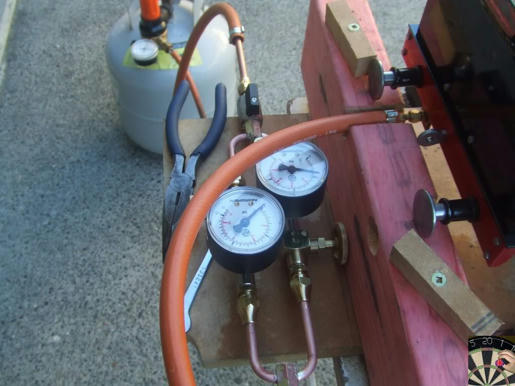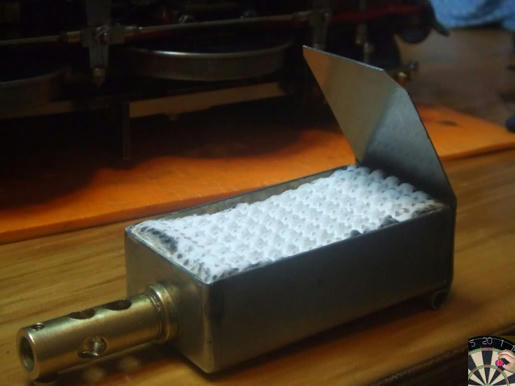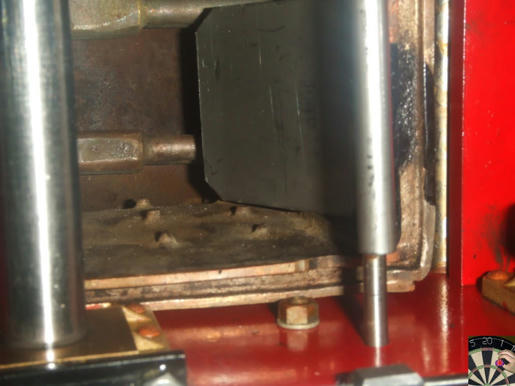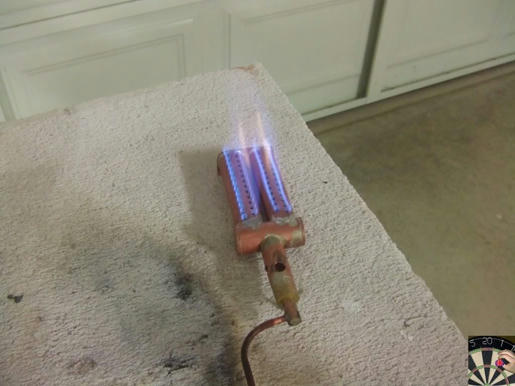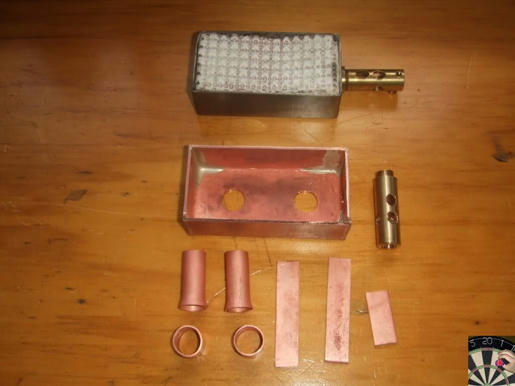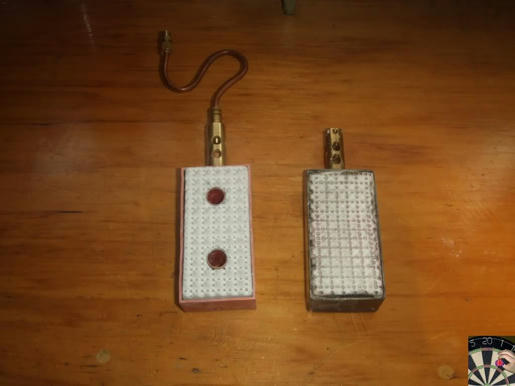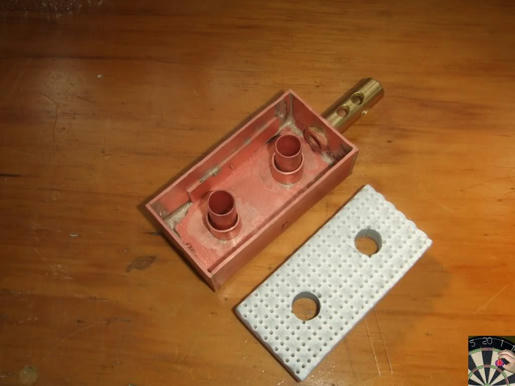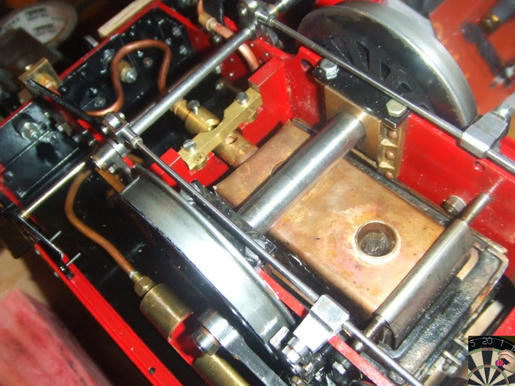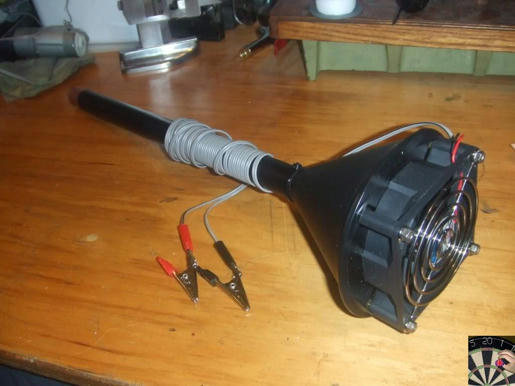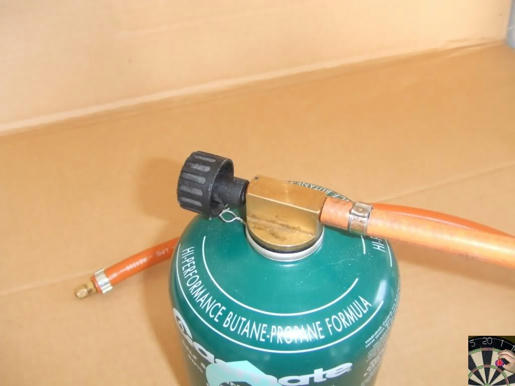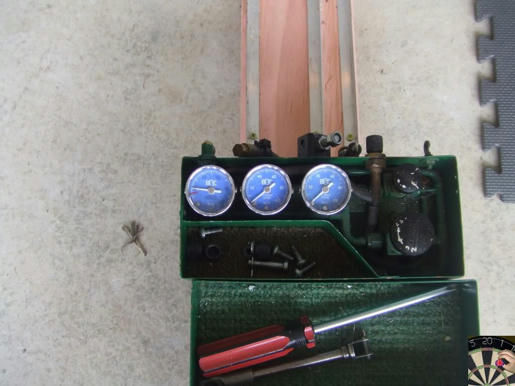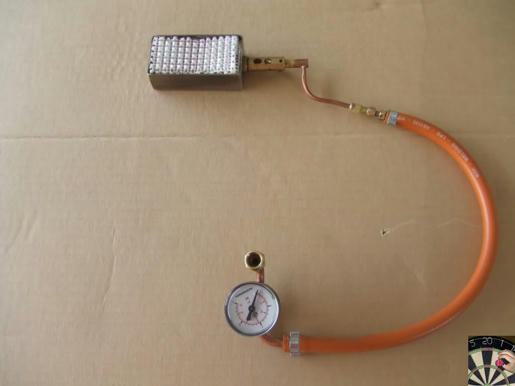I got a PM from Tups (Cris) for more details on the replacement ceramic burner I have made. This one works and if I dont forget to open the blower before I stop running it doesnt go out.
Some of this is a repeat from the Rob Roy thread but for completeness Ill do it again here and hopefully by the end it will all make a bit of sense;
The problem I had been having with running my loco successfully on gas was although I could get the engine up to pressure relatively easily maintaining it was a problem so I ended up going round the track in short runs followed by a recovery of pressure then on again. On the assumption that the more heat you can get into the engine the more steam you make and keep up the pressure. I have been experimenting with burners and learned something from the exercise. Some of it is blindingly obvious but it has helped me understand what is going on, or not as the case may be.
The basics being.
· To get more heat you need to burn more gas (I said it was blindingly obvious stuff)
· The amount of gas you burn is a factor of jet size and jet inlet pressure.
· You need the right balance of primary and secondary air to ensure complete combustion (its about a ratio 1:24 gas:air for propane (4%:96%)
I made myself a test rig so I could see what was going on. Regulator on the gas bottle, Input pressure gauge and output pressure gauge after the gas tap
Gas Control Rig
The assumed problem with the ceramic burner was that it couldnt get enough secondary air. If it is running on the electric blower its fine, on the steam blower its fine. But add more gas and the engine whistles like kettle as it tries to draw air through the holes on the firebox door. If the pressure is too high, and the blower is off, it flashes back with a huge pop or just goes out. If it goes out there's no indication as you can still hear the gas flowing. Not good
My starting pint was the local guys who had given me a lot of advice based on the success they had with gas firing their locos.
First was to put a baffle on the front of the burner to keep the flames in the firebox for a while rather than shoot straight down the fire tubes. This keeps the heat where you need it and stops you melting the paint on the smokebox. Believe me it works, I ran the loco once with it out and the smokebox paint job looks a bit sad now.
Stainless Baffle on original burner
Baffle in the firebox, note its at the fire tube end not the fire door end.
(
I am convinced this is a major contributor to success)
The next was make a new burner I started with making a new burner based on some old magazine articles, the intention being that the gaps between the tubes would allow enough secondary air.
This didnt work too well and made a couple of versions but they just didnt give the heat and there was lots of un-burnt gas.
New Burner
I then turned to resolving the secondary air issue with the ceramic burner I had seen a version of a burner with tubes running through it. I wasn't about to hack my burner about in case I was wrong so set about making a copy
All the parts alongside the original
New and old
New burner with the lid off
Installed in the loco you can see the baffle in the front
Make sure that the burner is as high up in the firebox as the jet holder will allow e.g hard against the foundation ring.
The dimensions for mine is 26mm high, 42mm wide 85mm long. This just fits in the firebox allowing for the ends of the stays and a little bit of room for the baffle
Through the middle are 2 x 12mm tubes for the necessary secondary air . To hold up the ceramic there are 2 x 15mm sleeves around the air tubes and strips of copper soldered on the inside edges of the body.
The jet holder is 38mm long 12mm dia brass drilled 8mm for the jet assembly, It is cross drilled with 6 x 5.6mm holes set at about 60degrees. The jet is a #15 held in with 6BA screw. The jet holder is mounted as low as it can be in the burner body. I'm sure it can be longer, as your installation would require.
My original was stainless steel, this one is copper, as thats what I had. Im sure brass would be just fine. (either way16-20swg)
I got my ceramic from Bruce Engineering (Polymodel) in the UK
http://www.pollymodelengineering.co.uk/sections/bruce-engineering/index.asp
It cuts really easily; I did the holes for secondary air pipes by using an offcut and twisting it slowly as it worked through the material.
See these drawings from Sandy C his burner gives a good view of a similar sort of burner albeit smaller and no secondary air holes. However it give you a good idea on sizes. Most of my burners have had some basis on this burner from Sandy and there does seem to be some commonality with parts.
http://www.homemodelenginemachinist.com/index.php?action=tpmod;dl=item155
Running with it
As with any loco a blower is needed to get the burner running otherwise youll get lots of flame out of the firebox door. I start at about 5-7psi gas pressure with the blower going, it doesnt need much of a blower, I use a computer fan in a cut down plastic funnel on a long coper tube so the whole lot doesn't melt. That said with the baffle it not like there's flames shooting out of the loco flue.
Once a bit of steam pressure is available (5-10psi) the steam blower can be opened and the external fan removed. As steam pressure comes up more gas can be applied. I find that 20psi max is good for my burner on this loco. It takes only about 10 mins from cold to full steam pressure (80psi), my boiler takes about 500ml of water.
OK I understand theres a but of reluctance to go to gas burners, but when they work they work pretty well, and clean up at the end of the day is just about zero in the firebox area. And if you have a problem with water, as I have been having on my small loco, no grappling for the dump pin. Just shut down, sort the water, if you've got steam pressure and bit of steam blower and re-light.
Hope that is of use to somebody
Pete
PS
For those of you who missed it, here it is running
[ame]http://www.youtube.com/watch?v=iugzOVs-73E[/ame]
Dodgy track at the end caused it to slow and stop
